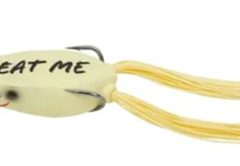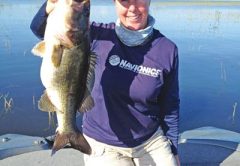Ask any hunter what makes deer so tough to hunt and, odds are, the first thing mentioned is their keen sense of smell. Although true, their eyes can spoil your hunt just about as quickly. Biologists have spent decades trying to figure out exactly what cervids (deer and elk) see and how their vision works. Only recently have great strides been made in resolving this since it took many technological advancements over the course of time to make some real determinations possible.
The eyes of all living things are of a truly remarkable design. They feature a retina located in the back of the eye to receive the image along with specialized cells called rods and cones. The rods are responsible for providing the amount of vision that all mammals have at night and we’ll get to more on them in a minute, but it’s the cones that help us to differentiate colors and provide our daytime vision. Hunters have been told for decades that deer are color blind. Truth is, that’s a bit misleading. Deer do, in fact, see color. They just happen to see it somewhat differently than we do. This is because the eyes of a deer only feature two cones as opposed to the three that we have. The cone that’s missing is the one that would allow them to see long wavelength colors well, such as those in the red/orange family, which is why wearing a blaze orange vest or hat doesn’t bother them at all.
THEIR KEEN NIGHTTIME VISION IS IN SOME WAYS EVEN BETTER THAN WHAT THEY’RE CAPABLE OF DURING THE DAY.
Colors that deer see very well are both greens and blues. Anything green will obviously appear somewhat natural to their surroundings but heading out to hunt in a blue jacket or pair of jeans wouldn’t exactly be a smart move. Have you ever thought that the reason for entering the woods before sunrise was so that you could slip in under the cover of darkness? If so, you’re badly mistaken.
When God was designing these critters, he went to extremes in giving them every advantage over us. Their keen nighttime vision is in some ways even better than what they’re capable of during the day. This is possible because of several physical differences between their eyes and ours.
First is the extremely large pupil that they possess. By being able to open so widely, far more light is gathered which works in much the same way as a good riflescope or pair of binoculars. Haven’t you ever noticed how much brighter things appear in your scope at dusk than to your naked eye? And, remember those rods that I mentioned earlier? Deer have a much higher concentration of them. As if that weren’t enough, they were also blessed with something called a tapetum. It’s a mirror of sorts that reflects light entering the eye and allows it to bounce around in there, passing over the rods more than once. In effect, it’s a light multiplier.
If you’ve ever gotten nighttime photos of deer with a trail camera or had one standing in front of your headlights after dark, you’ve seen how their eyes can glow. What you’re seeing is the light from either the camera’s flash or your car being reflected off of the tapetum. Although the effect is somewhat similar to “red eye” seen in photos of people taken with a flash, the deer’s glowing eyes are far more intense. “Red eye” is caused by direct light bouncing off of connective tissue in our eyes called the choroid. We weren’t lucky enough to be given a tapetum.
What all of this means is that there’s no such thing as a “cover of darkness” when it comes to being invisible to deer as their night vision is more than 50 times greater than our own. The real reason for hitting the woods before daybreak is so that you’re there well in advance of that first hour of light when deer movement is at its peak.
Besides these differences in day and night vision, cervids have a short, wide field of view with fairly poor depth perception and an inability for fine details. This is why camouflage patterns do a great job of hiding us so well. But, make no mistake about it; movement will catch their attention in a heartbeat.
Finally, the eyes of a deer are unable to filter ultraviolet light as ours do and many experts believe that clothing washed in regular laundry detergents will appear to deer as if it’s glowing. The truth is, nobody really knows but it makes enough sense to me that I don’t wash my hunting clothes in anything but hunting specific, scent free laundry detergents without UV brighteners.
Just what you needed, right? One more thing to concern yourself with in the deer woods!







